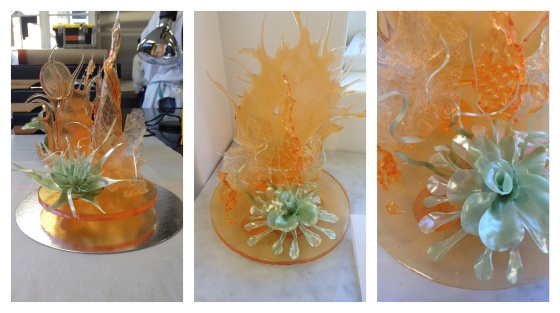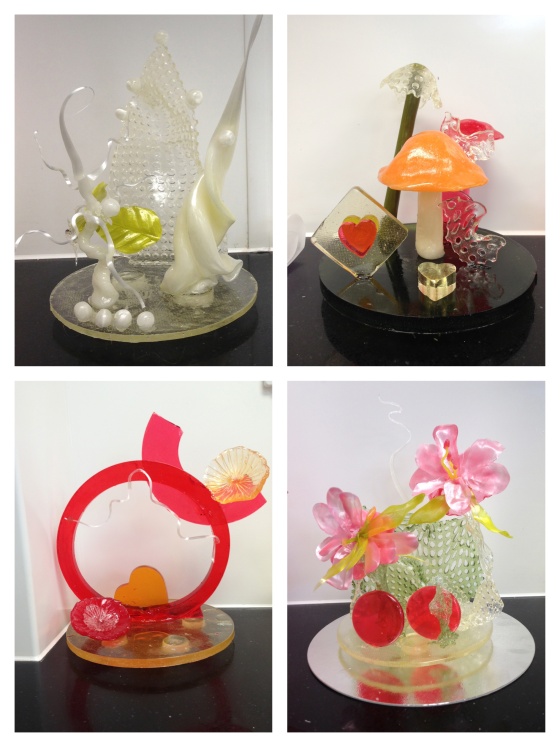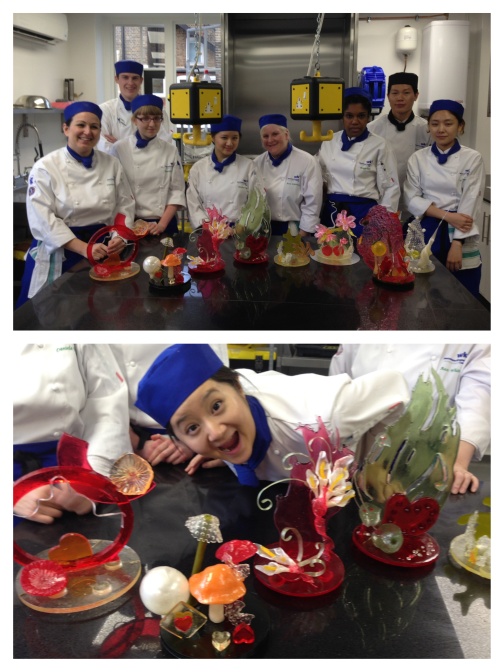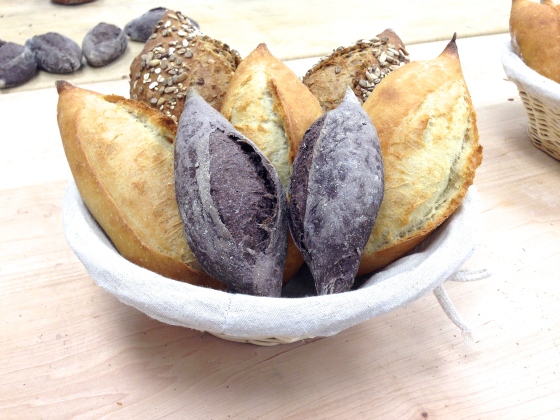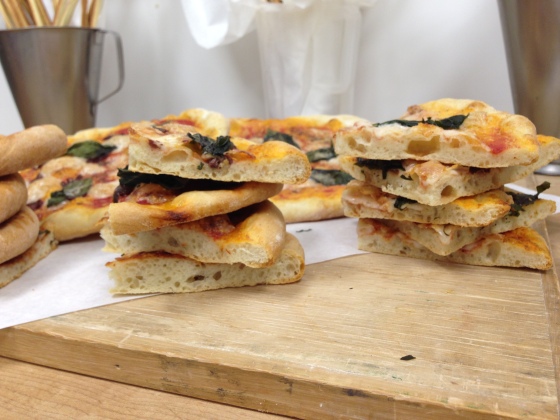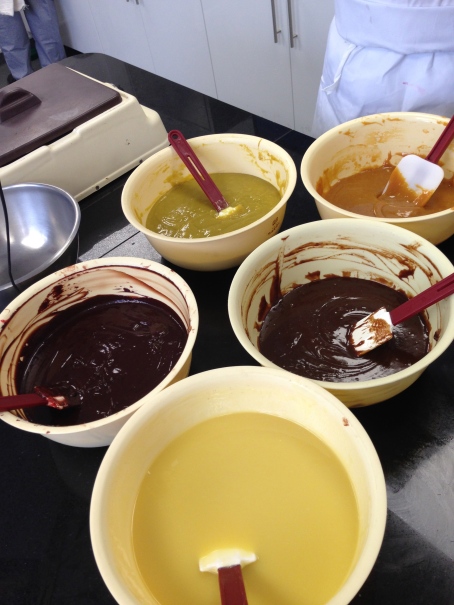A more “refined” pavlova than I’m used to. Usually I would just roughly spread the meringue onto a baking sheet, bake then top with copious amounts of fruit and chantilly cream. This one involved drawing a template for the base and piping little rosettes all the way round to contain the cream. Oh and cutting up the fruits and arranging in a nice way on the pavlova. I do like the more refined look, it tastes the same so why not spruce it up a bit :)
This recipe calls for quite a bit of sugar which means that it needs to be added to the egg whites more gradually and more time needs to be taken to whisk it in properly so that the whites stiffen enough to be piped. We had to whisk the meringue in true Westking style (no machines allowed!) and several of us had problems getting the egg to stiff peaks. We just about whisked our arms off, wondering whether there had been some grease in the bowl or whether we had added our sugar too quickly… in any case Chef took pity on us and let us get the mixer out :p
Makes approx 6 portions
3 egg whites
120g caster sugar
1/2 teaspoon vanilla
1/2 teaspoon white wine vinegar
1 teaspoon cornflour
1) Gradually whisk the sugar into the egg whites, until stiff peaks form.
2) Gently fold in the vanilla, vinegar and cornflour.
3) Pipe into a circle onto a silicon mat or baking paper and with a star nozzle pipe small little “twists” of meringue all around the edge. Bake for 50-60mins on 150c until the outside is crisp but the inside is still soft.
4) Leave to cool then fill the centre with whipped cream and any fresh fruit you like.


